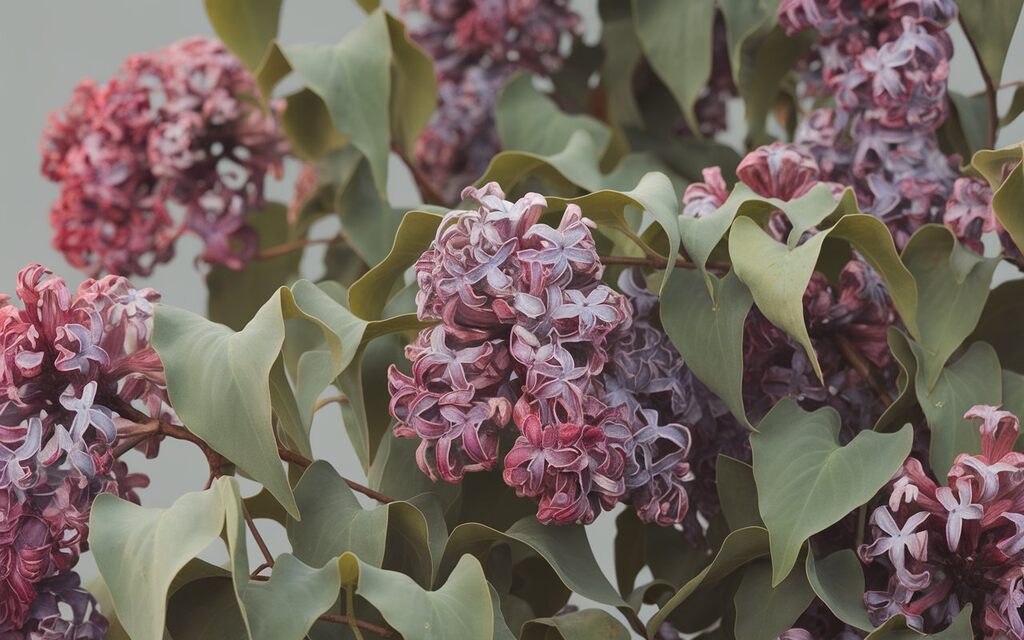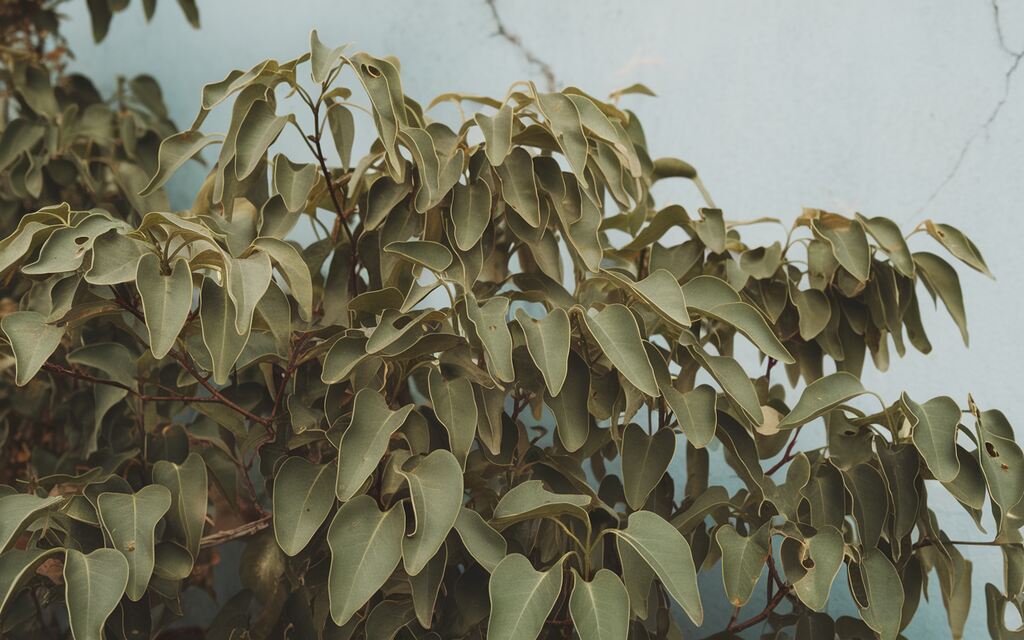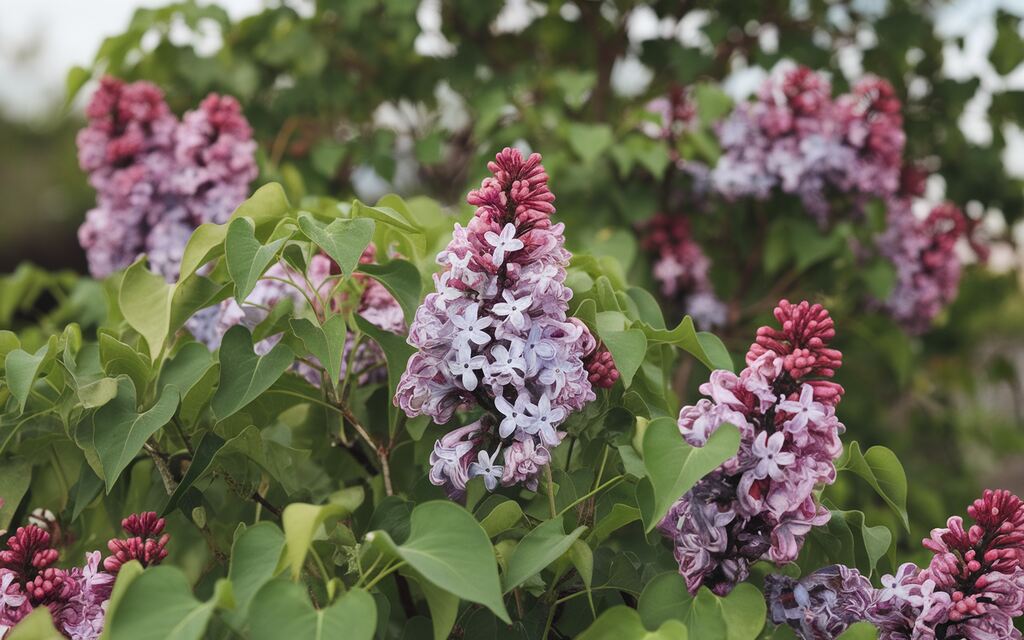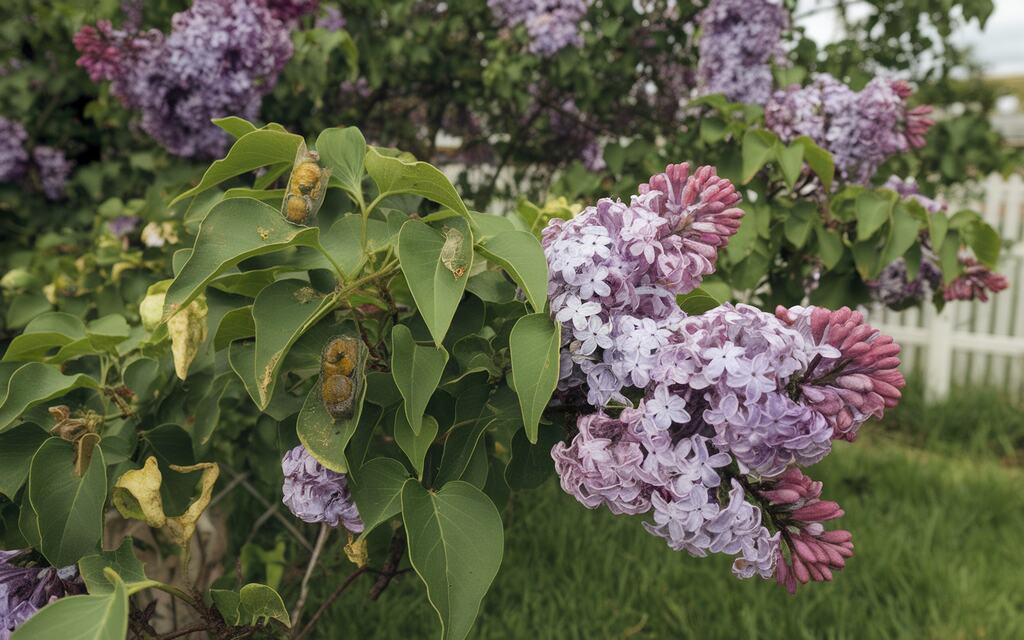Ever noticed your cherished lilac bush looking a bit under the weather? Those gorgeous purple blooms that fill your garden with sweet fragrance each spring deserve protection.
While lilacs generally stand firm against garden troubles, they aren’t immune to pest problems that can sneak up when you least expect them.
Your lilac’s health directly impacts its ability to produce those stunning flower clusters. Early pest detection differentiates between a minor garden hiccup and a major plant rescue operation.
Regular checks of your lilac bushes allow you to spot warning signs before damage becomes severe. What specific symptoms should you watch for to keep your lilacs thriving year after year? Here are he signs:
Sign 1: Distorted or Curled Leaves

Have you noticed your lilac leaves twisting into odd shapes? This distortion signals unwelcome guests making themselves at home. Aphids and leaf rollers pierce the leaf surface and extract vital sap from your plants.
They target new growth first, where tissue remains soft and vulnerable. Flip affected leaves over to spot the culprits hiding underneath. They prefer sheltered areas where they can feed undisturbed.
Check your lilacs weekly during spring growth spurts. Minor leaf curl today can engulf your entire bush tomorrow. A quick spray of insecticidal soap stops these invaders before a population explosion.
Sign 2: Holes or Notches in Foliage

Perfect circles and jagged edges on lilac leaves tell a story of hungry visitors. Each feeding pattern reveals a specific pest type. Japanese beetles leave skeletonized patches between veins, while leaf miners create winding tunnels through the tissue.
Your plant communicates through these distinct damage patterns. Small, scattered holes indicate beetles. Large chunks missing from the edges suggest caterpillars.
Examine lilacs during morning hours when insects feed actively. Catching culprits in the act helps with targeted treatment. Which parts of your lilacs typically show damage first?
Sign 3: Sticky Residue on Leaves and Stems

That glistening substance coating your lilac stems isn’t sap – it’s honeydew, the polite name for insect waste. Scale insects and aphids produce this sticky calling card while feeding on plant nutrients.
They extract the essentials and excrete the rest as evidence. Touch an affected leaf to feel the tackiness. This residue creates dual problems. It attracts ants who protect the pests in exchange for sweet rewards.
It also provides a growing medium for sooty mold. This black fungus blocks sunlight and hampers photosynthesis. Regular leaf cleaning with water prevents these secondary issues from developing.
Sign 4: Premature Leaf Drop

Your lilac calendar seems off when leaves yellow and fall during summer. This unseasonal drop signals spider mites at work. These microscopic invaders become active during hot, dry spells when plants already face stress.
They pierce cells systematically, draining vitality. Hold a white paper beneath the branches and tap gently. Tiny moving specks confirm mite presence. They thrive in dusty, arid conditions, targeting already struggling plants.
Does leaf drop accelerate during heat waves? Increase humidity around lilacs with water sprays on the foliage. This creates an environment that moisture-hating mites avoid, protecting your plants naturally.
Sign 5: Reduced or Distorted Blooms

Magnificent purple clusters you anticipate each spring can disappoint when pests strike. Flower buds damaged by thrips and bud mites never fulfill their potential. These invaders feed on developing blooms before opening, diminishing your garden’s spring showcase.
Check unopened buds for black dots or unusual browning. Such warning signs reveal pest activity already underway. Minute punctures disrupt normal development, transforming promising buds into stunted, asymmetrical flowers.
Prune affected buds promptly before pests migrate. This targeted approach prevents the spread while safeguarding your remaining blooms.
Sign 6: Visible Pests or Eggs

Sometimes, evidence sits in plain view – actual pests residing on your lilacs. Each variety leaves unique visual signatures to identify what’s targeting your plants. Aphids gather near growing tips while scale insects attach to stems like tiny bumps.
Conduct morning inspections when pest activity peaks. Use a magnifying glass for spotting minute mites and thrips. Egg masses hide on the undersides of stems and leaves as white clusters or fuzzy patches.
Wipe them away with a cloth to disrupt life cycles before hatching. Have you examined the sheltered inner sections of your bush where infestations typically begin?
Sign 7: White Powdery Coating
Ghostly white film on lilac leaves indicates that powdery mildew has established itself. Though fungal rather than pest-related, this condition creates ideal entry points for opportunistic insects.
Compromised surfaces offer easy access for secondary invaders. Address the root cause – insufficient air circulation. Lilacs planted densely or surrounded by shrubs retain moisture after rain or dew.
Thin interior branches to promote airflow. Does your bush receive morning sun to evaporate overnight dampness? Water at the soil level instead of spraying foliage. These adjustments create conditions less favorable for both fungi and the pests that follow them.
Integrated Pest Management for Lilacs
Treatment Strategies
Your lilacs face various pests, but you have powerful allies. Neem oil disrupts insect feeding. Water jets dislodge aphids. Insecticidal soap dissolves pest exoskeletons. Ladybugs and lacewings provide natural control.
Apply treatments in the evening when beneficial insects rest. Focus on leaf undersides where pests hide. Have you tried different spray patterns on your plants? Target specific pests with tailored approaches. Leaf miners need spring treatment. Scale insects require winter dormant oil.
Monitor recovery through new, unblemished growth. Watch for pest population decline after treatment. Keep records to refine your methods next season. Which pests appear most often in your garden? Stronger measures work when gentler methods fail.
Prevention Through Cultural Practices
Smart garden design creates resilient lilacs. Prune after flowering to open centers and improve airflow. Remove dead branches where pests multiply. Space bushes 6-10 feet apart to reduce humidity.
Consider mature size when planting new varieties. Create air corridors between plants. Have you examined your lilac’s structure lately? Healthy soil builds natural pest resistance. Lilacs prefer slightly alkaline conditions. Water deeply but infrequently. Apply compost instead of high-nitrogen fertilizers.
Clean up fallen leaves in autumn to remove pest habitat. Plant companions like alliums to repel aphids and dill to attract beneficial wasps. Choose resistant varieties like ‘Charles Joly’ for easier care. Could strategic plant groupings enhance your garden’s natural defenses?
Conclusion
Your lilacs signal their needs. Curled leaves mean aphids. Holes show beetles. Sticky residue indicates scale. Quick recognition enables prompt action. Brief inspections become part of your garden rhythm. Have you noticed how you spot these signs more easily each season?
Prevention brings beautiful results effortlessly. Smart spacing and timely pruning prevent most problems. Beneficial insects handle minor issues in balanced gardens. This harmony rewards you with waves of fragrant blooms annually. Isn’t that sweet spring perfume worth your attentive care?
FAQs
How often should I inspect my lilacs for pests?
Check your lilacs weekly during the spring and summer growing seasons. Monthly inspections work for fall and winter dormancy. Look more frequently during hot, dry periods when spider mites thrive. Any sudden leaf discoloration, wilting, or dropping demands immediate investigation.
Are some lilacs more pest-resistant than others?
‘Miss Kim’, ‘Pocahontas’, and ‘Charles Joly’ show excellent pest resistance in most climates. Japanese tree lilacs resist borers better than common varieties. Match your selection to local conditions. Northern gardeners benefit from different cultivars than southern growers.
Can pest problems affect next year’s blooms?
Summer pest damage directly impacts next spring’s flowers. Lilacs set buds shortly after blooming concludes. Severe infestations weaken plants and reduce bud formation. Recovery typically takes one to two bloom cycles after successful treatment.
What’s the difference between pest damage and disease symptoms?
Pest damage appears asymmetrical with feeding patterns like holes or notches. Disease symptoms spread uniformly across plant parts. Discoloration from pests concentrates around feeding sites. Multiple problems often co-exist, particularly when plants already face stress.
Should I avoid certain plants near my lilacs?
Avoid planting other viburnums or honeysuckle near lilacs, as they share pest vulnerabilities. Euonymus attracts scale insects that spread to lilacs. Plant bee balm, catmint, or alliums nearby instead. These companions repel problematic insects while attracting beneficial ones.
When is professional pest control warranted for lilacs?
Seek professional help for lilac borer infestations showing sawdust-like frass at stem bases. Experts should address scale covering more than 25% of branches. Professional assessment helps when multiple treatment attempts fail. Certified arborists offer targeted solutions with specialized equipment.
Can lilacs recover from severe pest damage?
Lilacs show remarkable recovery from even 30% defoliation by leafminers or caterpillars. Systemic borer damage presents greater challenges. Young plants bounce back faster than mature specimens. Support recovery with proper watering, mulching, and balanced fertilization after pest elimination.
Are organic pest control methods effective for lilacs?
Organic methods work exceptionally well for surface feeders like aphids and spider mites. Neem oil controls most common lilac pests with regular application. Some boring insects resist organic options. Combine multiple approaches like beneficial insects and horticultural oils for best results.

